Today’s Current Affairs: 8th April 2024 for UPSC IAS exams, State PSC exams, SSC CGL, State SSC, RRB, Railways, Banking Exam & IBPS, etc
Table of Contents
Policy Rates Unchanged 2024 : RBI

The Monetary Policy Committee (MPC) of the Reserve Bank of India (RBI), which met recently, decided to keep the repo rate – the main policy rate – unchanged at 6.5 per cent and maintain the policy stance of ‘withdrawal of accommodation’.
- Both the decisions were taken in a majority 5:1 voting by the six-member MPC, headed by RBI Governor Shaktikanta Das.
- The repo rate is the rate at which the RBI lends money to commercial banks in the event of any shortfall of funds. It is used by the RBI to control inflation.
- The current repo rate of 6.5% is the highest since August 2018, when it was at 6.5%.
- The RBI has raised the repo rate by a cumulative 250 basis points since May 2022 in the fight against inflation.
- The consumer price index (CPI) based retail inflation, which the RBI factors in while arriving at its monetary policy, is showing signs of moderation but still remains above the central bank’s upper tolerance level of 6%.
- In February 2023, retail inflation stood at 6.44%, compared to 6.52% in January
Electroencephalogram : 100 Years
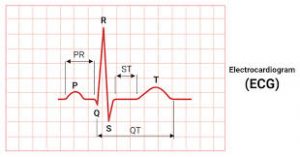
The year 2024 marks the centennial of the discovery of the electroencephalogram (EEG) by German psychiatrist Hans Berger.
- It remains a crucial tool for understanding the brain.
- Electroencephalogram (EEG) is a recording of brain activity. It is a test that detects abnormalities in your brain waves, or in the electrical activity of your brain.
- During the procedure, electrodes consisting of small metal discs with thin wires are pasted onto your scalp.
- The electrodes detect tiny electrical charges that result from the activity of your brain cells.
- The charges are amplified and appear as a graph on a computer screen or as a recording that may be printed out on paper.
- The EEG is used to evaluate several types of brain disorders.
- The EEG may also be used to determine the overall electrical activity of the brain (for example, to evaluate trauma, drug intoxication or extent of brain damage in comatose patients).
- The EEG may also be used to monitor blood flow in the brain during surgical procedures.
Project Akashteer:

The Indian Army has initiated the induction of control and reporting systems under ‘Project Akashteer’ to bolster its air defense capabilities.
- Project Akashteer is a cutting-edge initiative designed to automate air defense control and reporting processes by digitizing them.
- It aims to deliver an unprecedented level of situational awareness and control for the force to ensure the safety of friendly aircraft and engage hostile aircraft in contested airspace.
- It will enable monitoring of low level airspace over the battle areas of Indian Army and effectively control the Ground Based Air Defence Weapon Systems.
- Akashteer Command and Control Systems is developed by Bharat Electronics Limited (BEL) as part of the ‘Atmanirbhar Bharat’ initiative.
- The system’s control centers, designed to be vehicle-based and mobile, can maintain operational capabilities even in challenging communication environments.
- It will significantly enhance India’s air defense capabilities.
World Anti-Doping Agency:

India has emerged as the country with the highest percentage of doping offenders, according to the 2022 testing figures released by the WADA
- World Anti-Doping Agency (WADA) was established in 1999 as an international independent agency to lead a collaborative worldwide movement for doping-free sport.
- It’s governance and funding are based on an equal partnership between the sport movement and governments of the world.
- Its primary role is to develop, harmonize and coordinate anti-doping rules and policies across all sports and countries.
- Its key activities include scientific research, education, the development of anti-doping capacities and monitoring of the World Anti-Doping Code (Code), the document harmonizing anti-doping policies in all sports and all countries.
- After the events that shook the world of cycling in the summer of 1998, the International Olympic Committee (IOC) decided to convene a World Conference on Doping.
- The First World Conference on Doping in Sport held, in Lausanne, Switzerland, on February 2-4, 1999, produced the Lausanne Declaration on Doping in Sport.
- It provided for the creation of an independent international anti-doping agency to be operational for the Games of the XXVII Olympiad in Sydney in 2000.
Strategic Forces Command:
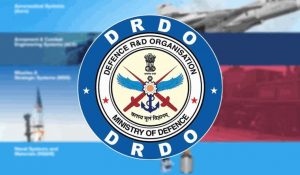
The new generation ballistic missile Agni-Prime was successfully flight-tested by the SFC along with the Defence Research and Development Organisation (DRDO) recently
- Strategic Forces Command (SFC) sometimes called Strategic Nuclear Command, forms part of India’s Nuclear Command Authority (NCA), which is responsible for command-and-control decisions regarding India’s nuclear weapons programme.
- It is responsible for the management and administration of the country’s tactical and strategic nuclear weapons stockpile. It was created in 2003.
- It is the responsibility of the SFC to operationalize the orders of the NCA under the leadership of a Commander-in-Chief who is a Senior Officer.
- It has the sole responsibility of initiating the process of delivering nuclear weapons and warheads after acquiring clear approval from the NCA.
- Moreover, the final target selection is also done by the SFC through a calibrated, cumulative process involving various levels of decision-making, including formal approval from the NCA.
- It manages and administers all strategic forces by exercising complete command and control over nuclear assets and producing all contingency plans as needed to fulfill the required tasks.
- Since its inception, the SFC’s command, control and communication systems have been firmly established and the command has attained a high state of operational readiness.
- It consists of officers and personnel of the Indian Army, Indian Air Force (IAF), and Indian Navy who are deputed from their respective services.
- The Commander-in-Chief, a 3-star General, is appointed on a rotational basis from the three services.
World Health Day 2024:
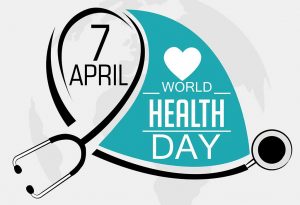
World Health Day 2024 is celebrated every year on April 7.
- World Health Day is aimed at raising awareness about global health issues and encourage people to live healthier.
- The origin of World Health Day goes back to 1948 when First Health Assembly was held by the organisation, where it was decided to commemorate April 7 as World Health Day and it came into effect in 1950.
- Over the years, the celebrations have aimed to create awareness around a specific health theme to highlight a priority area of concern for the World Health Organization.
- The theme of 2024 World Health Day is ‘My health, my right’.
- This theme was chosen to champion the right of everyone, everywhere to have access to quality health services, education and information, as well as safe drinking water, clean air, good nutrition, quality housing, decent working and environmental conditions and freedom from discrimination.
Exchange Traded Currency Derivatives : RBI

The Reserve Bank of India (RBI) has postponed the implementation of its new norms for the exchange-traded currency derivatives (ETCD) market.
- This decision follows concerns raised by market participants regarding participation in the ETCD market, which led to increased volatility in the forex market.
- The new norms, aimed to allow users to take positions in the foreign exchange derivatives market without needing to establish the existence of underlying exposure, up to a single limit of $100 million equivalent across all currency pairs involving the rupee.
- However, the RBI emphasized that the regulatory framework for ETCDs remains consistent, guided by the Foreign Exchange Management Act (FEMA), 1999.
- Users are required to ensure compliance with the requirement of having underlying exposure, and the limit for taking positions was subsequently amended to a single limit of $100 million combined across all exchanges.
Sierra Leone : Declared a National Emergency

Sierra Leone’s President recently declared a national emergency on substance abuse to crack down on the rising use of synthetic drugs known as kush.
- Sierra Leone is a tropical country in West Africa.
- It is bordered on the north and east by Guinea, on the south by Liberia and on the west by the Atlantic Ocean.
- The nation is largely made up of lightly wooded hills with a concentration of mangrove swamps along the coast.
- Some of the major ones include the Rokel River, Taia River, Moa River and Sewa River.
- Sierra Leone was colonized in 1787 by formerly enslaved people arriving from England; other groups followed from Nova Scotia (1792) and Jamaica (1800).
- They were sponsored and governed by the private Sierra Leone Company until 1808, when Britain made Sierra Leone a crown colony.
- In 1961, Sierra Leone became independent of the UK.
Agnibaan SOrTeD : Launch Postponed
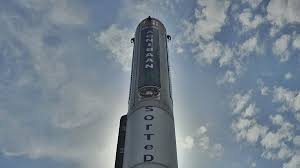
The launch of AgniKul ‘Agnibaan SOrTeD’ has been postponed.
- Agnibaan SubOrbital Technological Demonstrator (SOrTeD) is a single-stage launch vehicle powered by AgniKul’s patented Agnilet engine.
- It is the world’s first single piece 3D printed semi-cryogenic rocket engine.
- It will be launched from India’s first private launchpad, ALP-01, located inside the Indian space agency ISRO’s Sriharikota spaceport.
- It is India’s first ever vehicle equipped with a semicryogenic engine, the Agnilet, a subcooled liquid oxygen-based propulsion system developed indigenously.
- The rocket engine will burn kerosene in liquid oxygen and can be directly used in the rocket.
- It can carry a 100-kg payload up to a height of 700 km with a lift of mass of 14,000 Kgs.
- It can access both low- and high-inclination orbits and is completely mobile.
- It will also have the first ever Ethernet-based avionics architecture and fully in-house developed autopilot software from India.
- To ensure its compatibility with multiple launch ports, AgniKul has built a launch pedestal named ‘Dhanush’ that will support the rocket’s mobility across all its configurations.
Changpa Tribe:
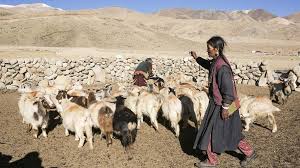
Climate activist Sonam Wangchuk and Leh Apex Body (LAB) decided to call off the Pashmina border march aimed at highlighting the plight of the Changpa nomadic tribes.
- The Changpa, or Champa, are semi-nomadic people found mainly in the Changtang plateau of southeastern Ladakh.
- They share linguistic and cultural affinities with Tibetans.
- All Changpa families profess Tibetan Buddhism as their religion.
- They are high-altitude pastoralists, raising mainly yaks and goats.
- They can be identified by their conical yak-skin tents called reboo.
- Each reboo invariably accommodates the family deity, and a picture of their spiritual head, in most cases, the Dalai Lama.
- The Changpa who live nomadic lives are known as Phalpa, while those who have settled down in fixed locations are called Fangpa.
- For many Changpas, rearing of animals and consuming and selling their produce (milk and its products, hair, and meat) is the only means of livelihood.
- They rear the highly pedigreed and prized Changra goats (Capra Hircus) that yield the rare Pashmina (Cashmere) fibre. It is the finest fibre of all goat hair.
- Their Buddhist belief does not allow them to kill animals for meat. It is only when animals die a natural death that the carcasses can be used for meat and hide, which the Changpas use to line their huts and make garments.
Nimmu-Padam-Darcha Road In Ladakh : Connectivity
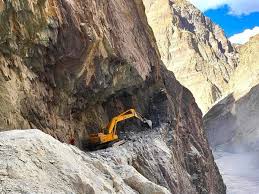
The Border Roads Organisation (BRO) has accomplished a significant milestone by establishing connectivity on the Nimmu-Padam-Darcha Road in Ladakh.
- Nimmu-Padum-Darcha Road serves as a vital link between the Indian Union territory of Ladakh and the state of Himachal Pradesh, traversing through the picturesque region of Zanskar, Ladakh.
- It is an all-weather road from Manali (Himachal Pradesh) to Leh (Ladakh) through Darcha and Nimmu on the Kargil–Leh Highway.
- It was constructed by the Border Roads Organisation (BRO).
- It crosses only one pass—Shinkun La (16,558 feet)—on which tunnel work is about to commence by the BRO.
- It will be the first all-weather road connecting Ladakh to the rest of the country.
- The connectivity will strengthen defence preparedness and provide a boost to economic development in the Zanskar valley.




